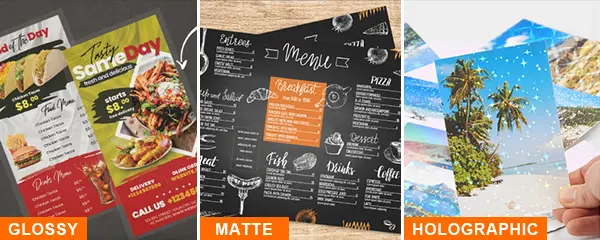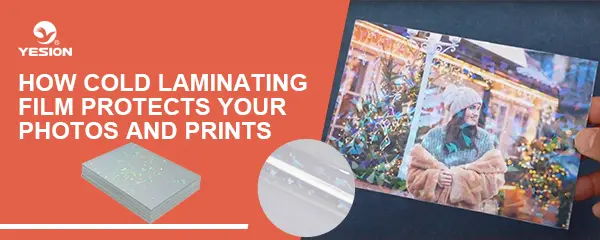
6 Essential Tools Every Vinyl Crafter Should Own
2025-07-04
5 Mistakes to Avoid When Using Colored Sticker Paper
2025-07-18In the age of digital printing and personalized photo art, preserving your photos and prints has never been more critical. Whether you are a professional photographer, a DIY enthusiast, or simply someone who cherishes physical photo memories, using cold laminating film for photos offers a reliable, cost-effective, and professional-grade solution to keep your prints pristine for years.
What Is Cold Laminating Film?
Cold laminating film is a pressure-sensitive adhesive film applied without heat. Unlike thermal laminating options, cold laminating film does not require a laminating machine that uses high temperatures. This makes it ideal for heat-sensitive materials, delicate photo paper, inkjet prints, and other substrates where thermal lamination could cause damage or warping.
The construction of cold laminating film typically includes:
- A clear protective layer (PVC or PET)
- A pressure-sensitive adhesive
- A backing liner for easy application
Benefits of Cold Laminating Film for Photos
1. Superior Protection Against Moisture and UV Damage
One of the top reasons professionals use cold laminating film for photos is its ability to seal out moisture, preventing water damage, smudging, and mold. Moreover, it provides UV resistance, shielding photo prints from sunlight and artificial light that can cause fading over time.
2. Scratch and Abrasion Resistance
Everyday handling can cause surface scratches or fingerprints. A laminated surface ensures durability by providing a robust outer shield that resists abrasions and scuff marks. This is essential for prints that will be displayed or handled frequently.
3. Enhances Appearance
Depending on the finish—glossy, matte, satin, or textured—cold lamination can enhance the visual appeal of your prints. Glossy films intensify color vibrancy, while matte finishes reduce glare and provide a professional aesthetic suitable for displays and exhibitions.
4. Safe for Heat-Sensitive Media
Unlike hot lamination, cold laminating film does not expose prints to heat, making it perfect for inkjet photo paper, thermal paper, and specialty substrates. It also ensures that intricate designs, water-based inks, and printed textures remain intact.
Common Applications of Cold Laminating Film
Photography and Art Prints
For framed photographs, gallery prints, or studio portraits, cold laminating film preserves the original quality while protecting against fingerprint oil, dust, and discoloration.
Signage and Posters
Used extensively in the sign-making industry, cold laminating film provides weather resistance for outdoor posters and signage, making them waterproof and fade-resistant.
Scrapbooking and Memory Albums
DIY creators and memory keepers use cold lamination sheets to protect decorative pages, photos, stickers, and printed mementos in scrapbooks without curling or bubbling.
Labels and Decals
Protective cold lamination films are ideal for custom labels, decals, and stickers, especially those that require tactile handling or are used in humid environments.

Glossy, Matte, Holographic
Types of Cold Laminating Film Finishes
Glossy Finish
Enhances colors and sharpness;
Ideal for vivid photo prints, posters, and marketing materials;
Adds a premium reflective surface.
Matte Finish
Reduces reflections and glare;
Provides a softer, more elegant appearance;
Suitable for archival prints and display under direct lighting.
Textured Finish
Adds depth and tactile feel;
Often used in menu covers, cards, or decorative photo books.
How to Apply Cold Laminating Film
1. Prepare Your Print Surface
Ensure the photo or printed sheet is:
- Clean and dry
- Free of dust, oil, or static particles
- Flat without creases or folds
2. Measure and Cut the Film
Use a rotary cutter or craft blade to cut the film slightly larger than your photo dimensions to allow for edge sealing.
3. Peel and Stick Gradually
Start from one edge, slowly peeling the backing while pressing the adhesive side onto the print. Use a squeegee or roller to eliminate air bubbles and ensure smooth bonding.
4. Trim Excess Film
Once laminated, trim off the extra film edges neatly using a cutting mat and precision knife for a clean, professional finish.
Choosing the Right Cold Laminating Film
Material Compatibility
Cold laminating films are typically made from:
- PVC (Polyvinyl Chloride): Cost-effective and flexible
- PET (Polyester): Durable and ideal for long-term display
Ensure your print material is compatible with the adhesive layer of the film.
Adhesive Type
Look for:
- Permanent adhesive for long-lasting application
- Removable adhesive if repositioning is required
Thickness and Roll Width
Thicker films offer better protection but may reduce flexibility. Roll widths vary from A4 sheets to wide-format rolls for larger prints or batch processing.
Storage and Maintenance Tips
Store laminated prints in cool, dry conditions.
Avoid bending or folding laminated items.
Use a microfiber cloth for gentle cleaning.
Keep laminated photos away from prolonged direct sunlight to maintain clarity.
Where to Buy High-Quality Cold Laminating Film
When looking for premium cold laminating film, choose suppliers that offer:
- A wide range of finishes and sizes
- Transparent and optically clear options
- Non-yellowing adhesive for long-term clarity
We recommend exploring trusted manufacturers like Yesion for consistent, high-grade lamination supplies tailored to crafting, printing, and preservation needs.
Conclusion: Preserve What Matters
Using cold laminating film for photos and prints is a smart, professional, and affordable way to safeguard your most cherished memories. Whether you’re crafting personalized albums, creating retail displays, or preserving printed artwork, this method offers unmatched durability, clarity, and ease of use without the risk of heat damage.
Protect what matters most—cold lamination ensures your memories last a lifetime.
Related:
Difference Between Hot and Cold Laminating Film
Can I use cold laminating film without machine?
What can you do with cold laminating film?

